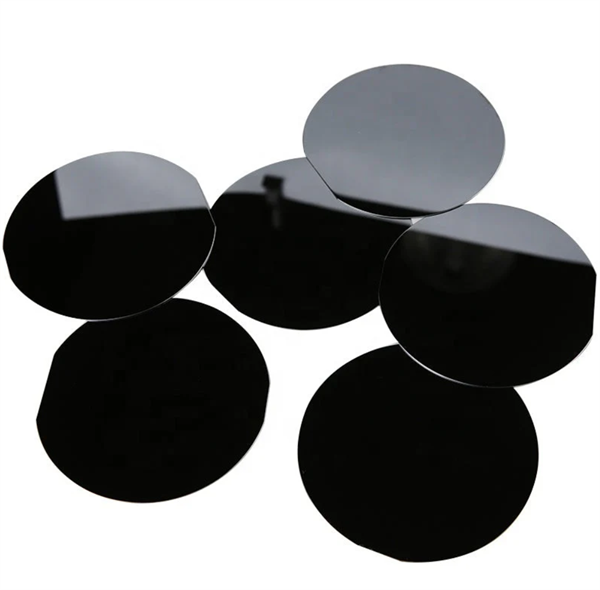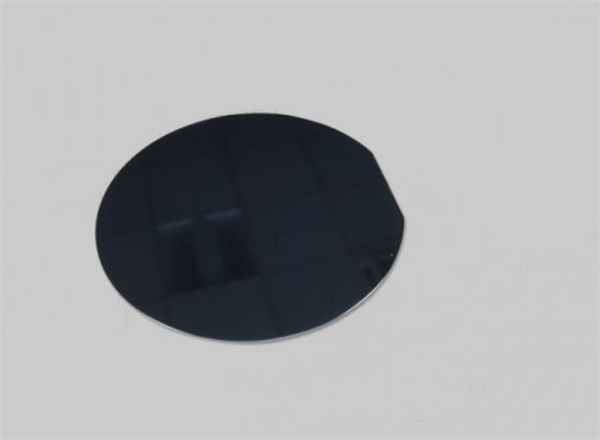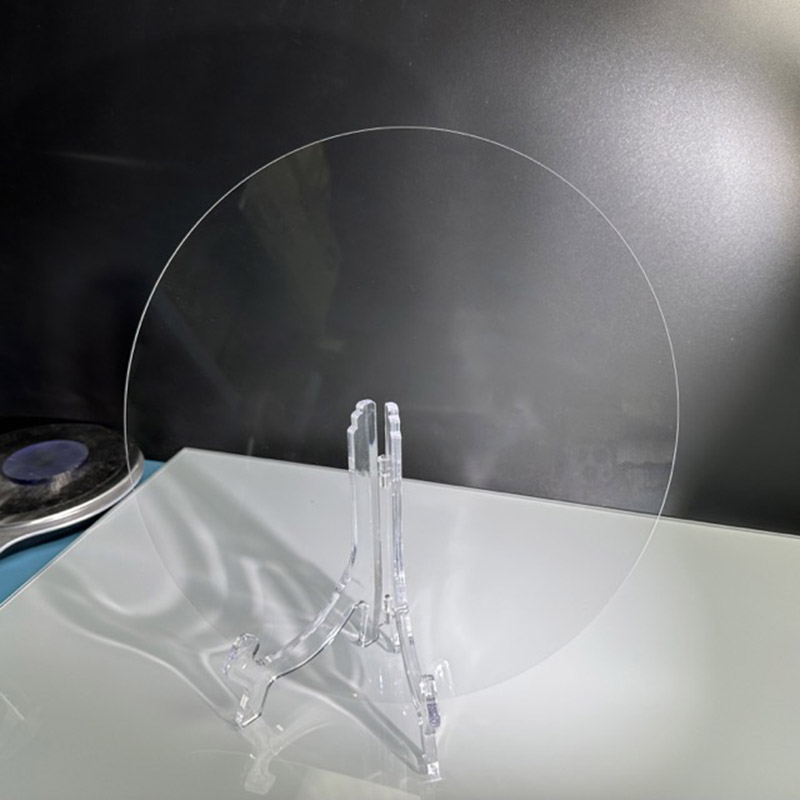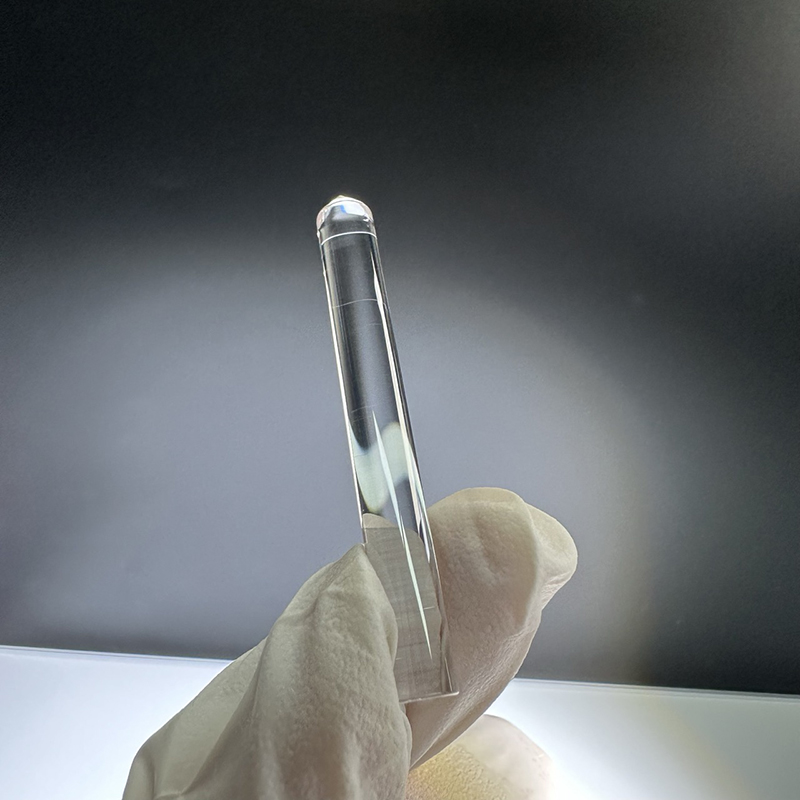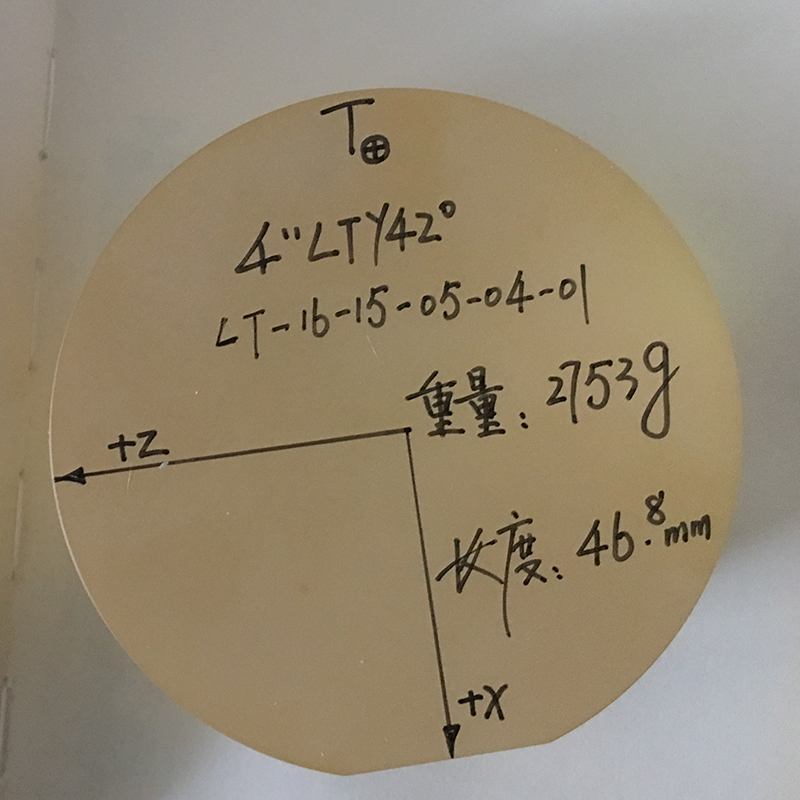p-type 4H/6H-P 3C-N TYPE SIC substrate 4inch 〈111〉± 0.5°Zero MPD
4H/6H-P Type SiC Composite Substrates Common parameter table
4 inch diameter Silicon Carbide (SiC) Substrate Specification
| Grade | Zero MPD Production
Grade (Z Grade) |
Standard Production
Grade (P Grade) |
Dummy Grade (D Grade) |
||
| Diameter | 99.5 mm~100.0 mm | ||||
| Thickness | 350 μm ± 25 μm | ||||
| Wafer Orientation | Off axis: 2.0°-4.0°toward [1120] ± 0.5° for 4H/6H-P, On axis:〈111〉± 0.5° for 3C-N | ||||
| Micropipe Density | 0 cm-2 | ||||
| Resistivity | p-type 4H/6H-P | ≤0.1 Ωꞏcm | ≤0.3 Ωꞏcm | ||
| n-type 3C-N | ≤0.8 mΩꞏcm | ≤1 m Ωꞏcm | |||
| Primary Flat Orientation | 4H/6H-P | -
{1010} ± 5.0° |
|||
| 3C-N | -
{110} ± 5.0° |
||||
| Primary Flat Length | 32.5 mm ± 2.0 mm | ||||
| Secondary Flat Length | 18.0 mm ± 2.0 mm | ||||
| Secondary Flat Orientation | Silicon face up: 90° CW. from Prime flat ± 5.0° | ||||
| Edge Exclusion | 3 mm | 6 mm | |||
| LTV/TTV/Bow /Warp | ≤2.5 μm/≤5 μm/≤15 μm/≤30 μm | ≤10 μm/≤15 μm/≤25 μm/≤40 μm | |||
| Roughness | Polish Ra≤1 nm | ||||
| CMP Ra≤0.2 nm | Ra≤0.5 nm | ||||
| Edge Cracks By High Intensity Light | None | Cumulative length ≤ 10 mm, single length≤2 mm | |||
| Hex Plates By High Intensity Light | Cumulative area ≤0.05% | Cumulative area ≤0.1% | |||
| Polytype Areas By High Intensity Light | None | Cumulative area≤3% | |||
| Visual Carbon Inclusions | Cumulative area ≤0.05% | Cumulative area ≤3% | |||
| Silicon Surface Scratches By High Intensity Light | None | Cumulative length≤1×wafer diameter | |||
| Edge Chips High By Intensity Light | None permitted ≥0.2mm width and depth | 5 allowed, ≤1 mm each | |||
| Silicon Surface Contamination By High Intensity | None | ||||
| Packaging | Multi-wafer Cassette or Single Wafer Container | ||||
Notes:
※Defects limits apply to entire wafer surface except for the edge exclusion area. # The scratches should be checked on Si face only.
The P-type 4H/6H-P 3C-N type 4-inch SiC substrate with 〈111〉± 0.5° orientation and Zero MPD grade is widely used in high-performance electronic applications. Its excellent thermal conductivity and high breakdown voltage make it ideal for power electronics, such as high-voltage switches, inverters, and power converters, operating in extreme conditions. Additionally, the substrate's resistance to high temperatures and corrosion ensures stable performance in harsh environments. The precise 〈111〉± 0.5° orientation enhances manufacturing accuracy, making it suitable for RF devices and high-frequency applications, such as radar systems and wireless communication equipment..
The advantages of N-type SiC composite substrates include:
1. High Thermal Conductivity: Efficient heat dissipation, making it suitable for high-temperature environments and high-power applications.
2. High Breakdown Voltage: Ensures reliable performance in high-voltage applications like power converters and inverters.
3. Zero MPD (Micro Pipe Defect) Grade: Guarantees minimal defects, providing stability and high reliability in critical electronic devices.
4. Corrosion Resistance: Durable in harsh environments, ensuring long-term functionality in demanding conditions.
5. Precise 〈111〉± 0.5° Orientation: Allows for accurate alignment during manufacturing, improving device performance in high-frequency and RF applications.
Overall, the P-type 4H/6H-P 3C-N type 4-inch SiC substrate with 〈111〉± 0.5° orientation and Zero MPD grade is a high-performance material ideal for advanced electronic applications. Its excellent thermal conductivity and high breakdown voltage make it perfect for power electronics like high-voltage switches, inverters, and converters. The Zero MPD grade ensures minimal defects, providing reliability and stability in critical devices. Additionally, the substrate's resistance to corrosion and high temperatures ensures durability in harsh environments. The precise 〈111〉± 0.5° orientation allows for accurate alignment during manufacturing, making it highly suitable for RF devices and high-frequency applications.
Detailed Diagram
